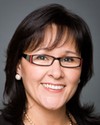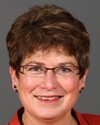Thank you, Madam Chairperson.
Thanks, Madam Minister, Dr. Butler-Jones, Shelagh Jane Woods, and Dr. Gully. I appreciate your being here.
This is a week after our first meeting, and the reason we all felt it would be important to hear from you at this meeting, as well as from representatives of first nations and Inuit communities, is that we had the sense that of all the areas of a possible pandemic, we were least prepared in terms of aboriginal issues.
Today you presented a fairly rosy picture, Madam Minister, suggesting that we're in great shape as we head into the fall, when we might be faced with a pandemic. But that flies in the face of everything we're hearing from first nations communities. We will hear from them again later today. They seem to feel that in fact we aren't as prepared as you're suggesting. They have big questions. There are very grave concerns about the adequacy of supplies, resources, staff, and communications.
So we're here to try to figure out what's missing and how we can fix the problems, because I don't think anybody here today would dare suggest we're as prepared as we should be at this point, near the end of August, facing a possible outbreak in September.
My first question is this. In Manitoba the first nations communities, under Grand Chief Evans, came together and requested funding for flu kits. The Province of Manitoba has agreed to provide some money for those flu kits. First nations communities have had to resort to doing fundraisers to raise money for flu kits. I was at the fundraiser last Friday night, which was well attended and raised a great deal of money, where Chief Evans indicated that this was a very important contribution to communities in Manitoba.
So my question to you is, Madam Minister, are you prepared to put some money on the table to support the provision of flu kits for every first nation and Inuit community in this country?





